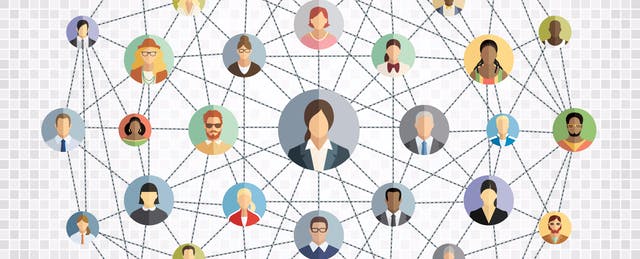Regarding the video “What is a Personal Learning Network (PLN)?“(FutureLearn, 2022), The way we learn has evolved, according to the video, not just in terms of what we do in the classroom or with the teacher, but also in terms of how we learn through social media, video sharing sites, and forums(Unknown, 2022).
A personal learning network (PLN) is a collection of people who have common interests, aspirations, and beliefs. The members are not necessarily related to one another, although they may be linked by common experiences or goals.
Tian discusses in her wow and wonder: “PLNs are especially beneficial at a time when fresh knowledge and ideas are reshaping the world at a rate never seen before.” Fresh information and ideas are changing the globe at a much faster rate than ever before, PLNs are extremely valuable(Tarach, 2019).
The purpose of a PLN is to provide members with an opportunity to discuss issues that affect them personally and/or professionally. So I think a PLN is a great way to learn and share knowledge. About why Personal Learning Network is needed.
Banow (2013)said that:”Faculty who work in remote areas use social media sites like Twitter to connect with a huge number of people who share their teaching interests, research interests, and experience. Professional development and isolation relief are both aided by this resource.”
So, Personal Learning Network is a great way to help people in remote areas get the latest knowledge.

In the article “Connectivism: A Learning Theory for the Digital Age”(Siemens, 2005), the author explains: “The continual acquisition of new information based on a quickly shifting foundation is known as connectionism.” Mia said on her blog: “Because its core idea revolves around a network of individuals sharing knowledge, sources, and viewpoints, connectionism is the most important learning theory in the digital age.”
Technology is important in education today because it opens up new ways to learn: digital technologies allow us to access information not only directly through the Internet, but also indirectly through apps like Google Docs. Digital technologies are a set of tools that allow us to communicate, store and process information. We can acquire and store knowledge through the Internet. This reminds me of an example of the learning impact of connectionism is the personal learning network. Exchange resources and learn from each other through communication on the Internet and social media. Constructivism is a hypothesis about how people learn that is based on observation and scientific research (Unknown, 2022). Constructivism is a traditional theory of learning that holds that learners can acquire knowledge through tasks. Thus, in contrast to constructivism, connectionism is a new way of sharing resources and learning centered on the Internet. Let’s connect with the internet.
With regard to connectionism and personal learning networks, my idea is that in the linking and creation of networks, information can easily travel from one area to another. The aggregation of this information forms a vast networked world. Twitter, for example, is a great personal learning network. Connection is the key to online learning.
In the article “The Construction of Personal Learning Networks to Support Non-Formal Workplace Learning of Training Professionals”(Manning, 2015). The authors mention: “We can’t expect to learn everything we can on our own, so we must rely on the experience of others to supplement our knowledge. The foundation of connectionism is these links to people and devices.”I think that in networking, experience is the catalyst for connection formation. A personal learning network (PLN) is a collection of resources or nodes (people, information sources, etc.) that people use to meet their learning needs (Manning, 2015).
For example, I now have the knowledge I have mastered as a node. Through the integration and connection of the personal learning network, the past experience of others will also help me become more familiar with my major, and even expand some new knowledge.
And the question I want to keep thinking about and discussing is about the application of connectionism to expand the personal network.
References
Banow, R. (2013, February 25). PLN (Personal Learning Network): What, Why, and How? | Educatus. https://words.usask.ca/gmcte/2013/02/25/pln-personal-learning-network-what-why-and-how/
Constructivism as a Paradigm for Teaching and Learning. (2022). WNET EDUCATION. https://www.thirteen.org/edonline/concept2class/constructivism/
Manning, C. A. (2015). Media.proquest.com. Retrieved March 1, 2022, from https://media.proquest.com/media/hms/PFT/1/XmzGG?_s=tbdx5TxlyNIsfNQODQKE%2BMv0hUE%3D
Siemens, G. (2005, January). Connectivism: A Learning Theory for the Digital Age. International Journal of Instructional Technology&Distance Learning. https://www.itdl.org/Journal/Jan_05/article01.htm
Trach, E. (2019, April 18). Personal Learning Network (PLN) Benefits, Tools, and Tactics. Schoology. https://www.schoology.com/blog/personal-learning-network-pln-benefits-tools-and-tactics
Updates, Insights, and News from FutureLearn | Online Learning for You. (2021, February 4).FutureLearn. https://www.futurelearn.com/info/courses/learning-network-age/0/steps/24644
Leave a Reply